We mistakenly received a Central American cichlid species from South East Asia under the name “Cichlasoma cyanoguttata”. After the 5-6 cm long fish had swum in a little, we went about identifying them and came to the conclusion that they were probably a Vieja species, most likely V. zonata.
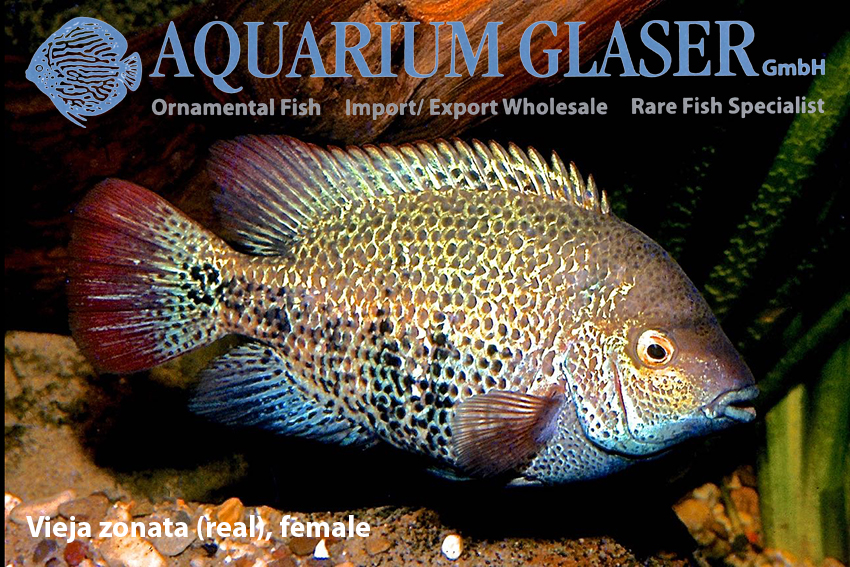
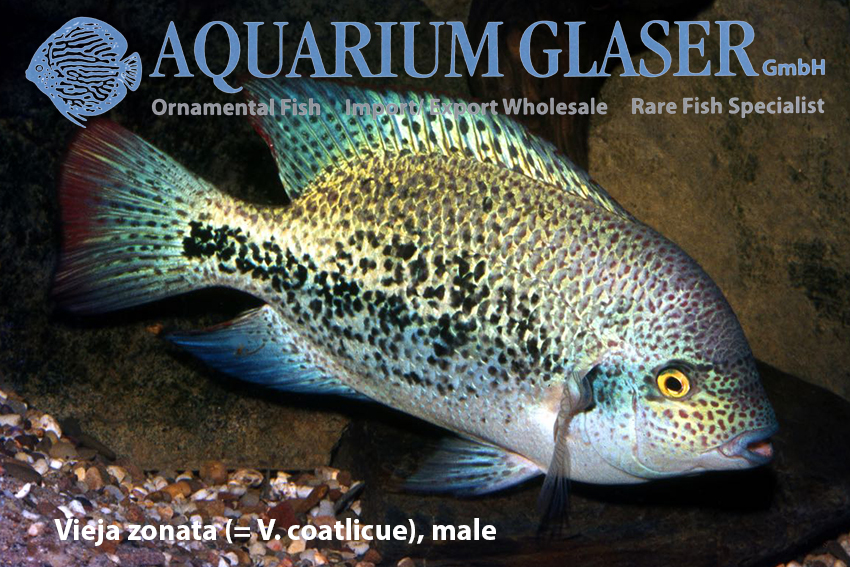
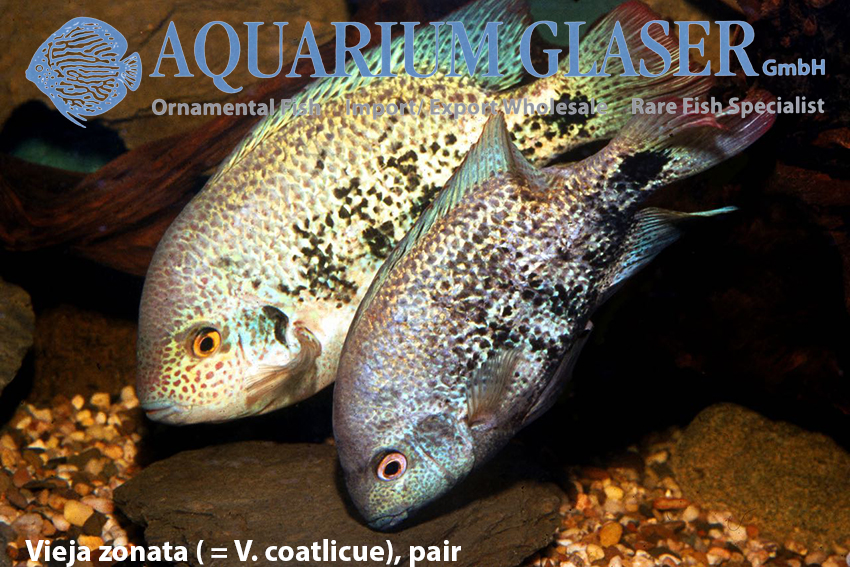
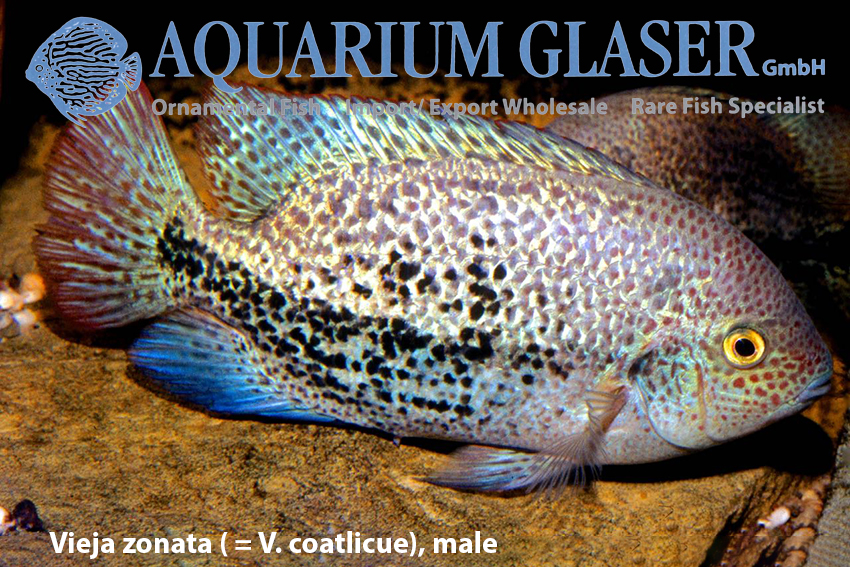
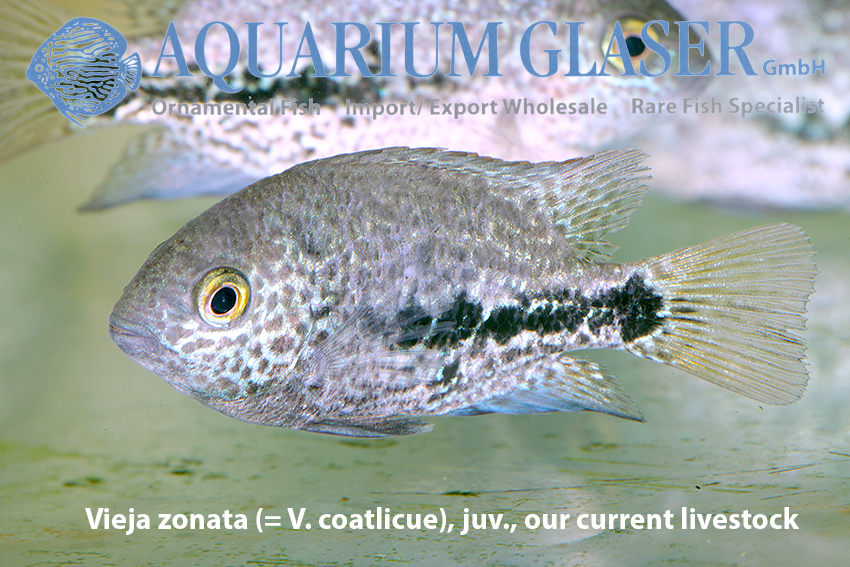
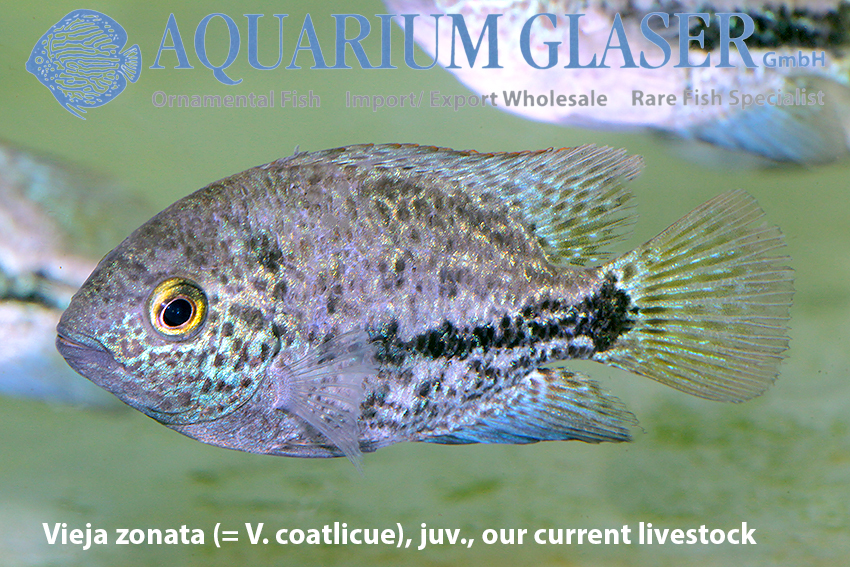
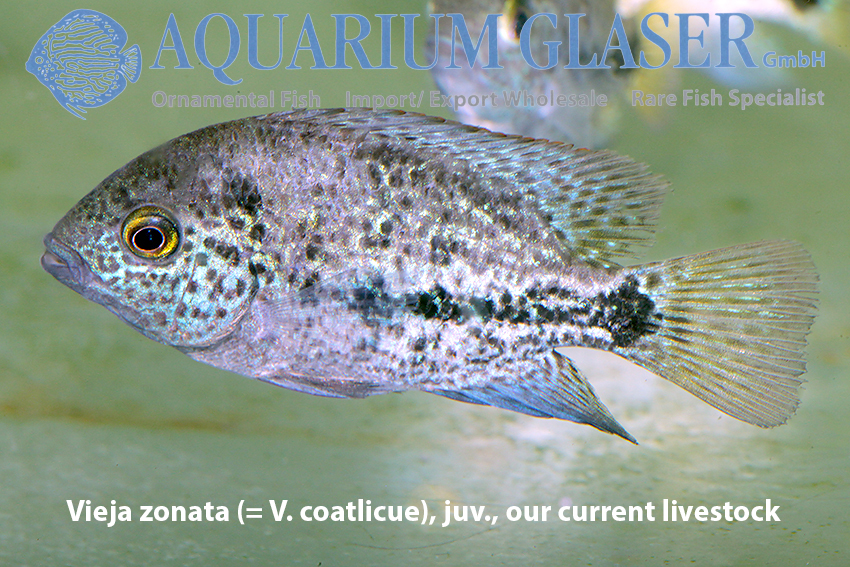
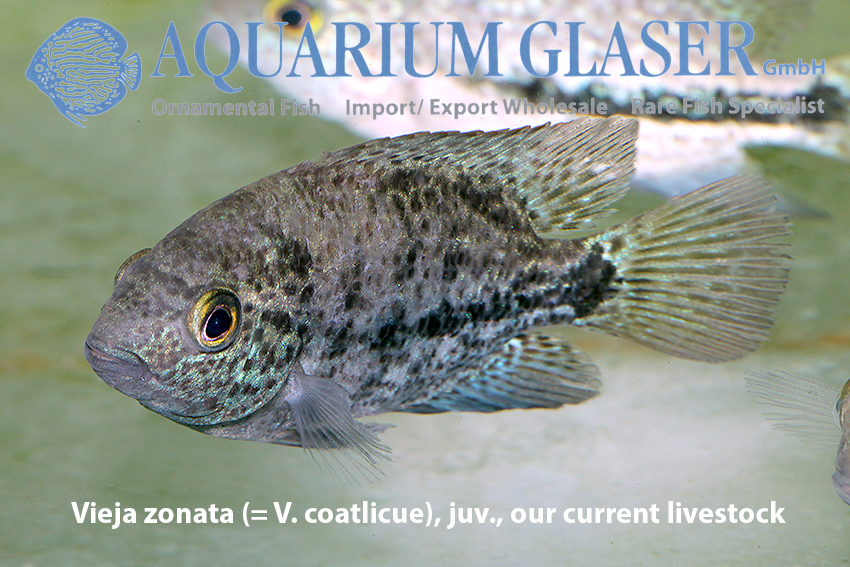
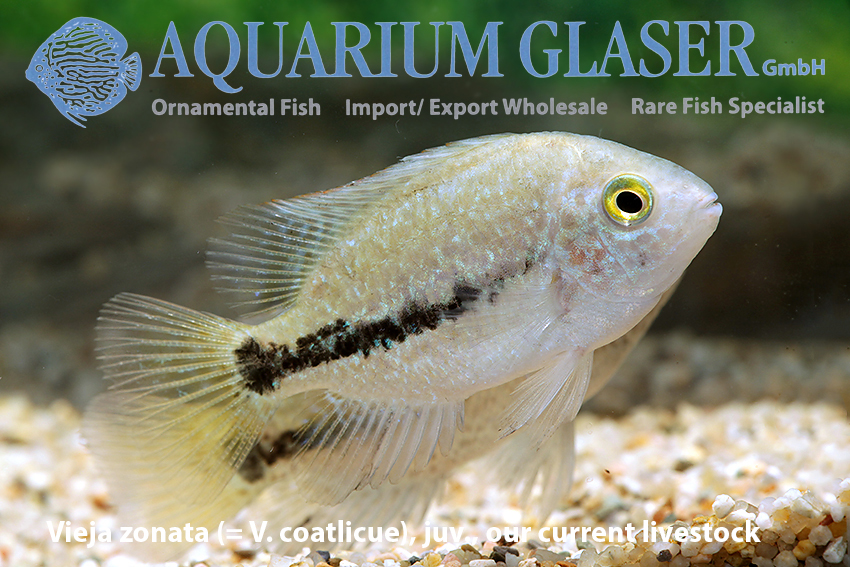
In such cases, however, it is always advisable to seek further opinions, which we do whenever possible. In this case, we asked Uwe Werner, an outstanding expert on Central American cichlids, for his opinion. He wrote: “These are indeed Vieja, and according to American researchers also V. zonata. However, Breidohr, Stawikowski and I caught other fish in 1983 near Niltepec, the type locality of V. zonata (Pacific side of southern Mexico), of which I am sending a picture. The ones you imported are certainly from the Isthmus of Tehuantepec, where they look slightly different in each river (one form was described as V. coatlicue). The American scientists already mentioned consider V. coatlicue to be a synonym of V. zonata. Rico Morgenstern once had a report in the DCG-Info, according to which the V. zonata were not collected at Niltepec at all, but I don’t believe this; I think yours are the ones we called “red-tailed theraps” at the time. As we brought back several of the species we found as babies, which we thought were the same species in the field and therefore mixed during transportation, we unfortunately can’t say exactly where the red-tailed came from.”
So there are still many exciting observations to be made on this Vieja form, that much is certain. These are magnificent animals that can reach a total length of 25 cm (females remain smaller). They are open-breeders with a parental family. Vieja species are considered to be comparatively peaceful cichlids from the Cichlasoma relationship, provided they are kept in large aquaria. V. zonata is somewhat of an exception, as this species in particular has a large number of extremely intraspecific aggressive animals. A large tank and the company of other, preferably very differently colored, large Central Americans are the best way to keep the aggressiveness within limits. The fish are undemanding in terms of water values and diet. In the wild, water temperatures of 26-28°C, a hardness of 12-20°dGH and a pH of around 7.5 prevail, but V. zonata are adaptable and thrive in the aquarium in any standard drinking water.
For our customers: the animals have code 688592 on our stocklist. Please note that we only supply the wholesale trade.
Text & Photos: Uwe Werner & Frank Schäfer




